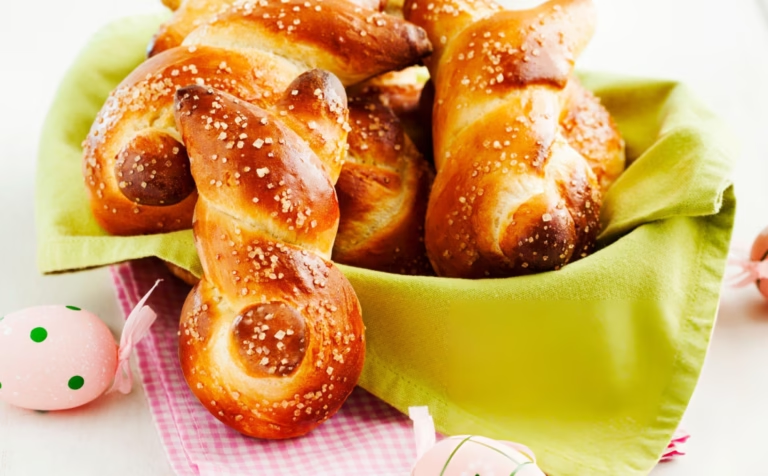Sabudana Khichdi is a beloved Indian dish, especially popular during fasting periods like Navratri, Ekadashi, or Mahashivratri. Made with tapioca pearls (sabudana), peanuts, and mild spices, this dish is light on the stomach yet incredibly satisfying. Whether you’re observing a fast or simply craving a wholesome meal, this easy-to-make Sabudana Khichdi recipe will become your go-to favorite.
Why You’ll Love This Sabudana Khichdi
Perfect for fasting (vrat) – Made with ingredients allowed during Hindu religious fasts.
Light yet filling – Provides energy without feeling heavy.
Quick & easy – Ready in under 30 minutes.
Versatile – Can be customized with extra veggies or spices.
Gluten-free & vegan – Naturally suits dietary restrictions.
Ingredients You’ll Need
For the best Sabudana Khichdi, gather these simple ingredients:
Main Ingredients
1 cup sabudana (tapioca pearls) – Soaked properly for soft texture.
2 medium potatoes – Boiled and diced.
½ cup roasted peanuts – Crushed for crunch.
2 green chilies – Finely chopped (adjust to taste).
1 tsp cumin seeds (jeera) – For tempering.
1 tbsp ghee or oil – Ghee enhances flavor (use oil for vegan version).
1 tsp sugar – Balances flavors (optional).
1 tbsp lemon juice – Adds freshness.
Salt to taste – Use sendha namak (rock salt) for fasting.
Fresh coriander leaves – For garnish.
Optional Add-ons
½ tsp red chili powder – For extra spice.
½ cup grated coconut – For a South Indian twist.
1 tbsp yogurt – For slight tanginess.
Step-by-Step Instructions
Step 1: Soaking Sabudana (The Most Important Step)
The key to perfect Sabudana Khichdi lies in soaking the tapioca pearls correctly.
Rinse sabudana – Wash under running water until the water runs clear.
Soak properly – In a bowl, add sabudana and just enough water to barely cover it (about ¼ inch above the pearls).
Let it rest – Cover and soak for 4-5 hours (or overnight).
Check texture – After soaking, press a pearl between fingers—it should mash easily without being mushy.
Pro Tip: If sabudana turns sticky, sprinkle some water and let it sit for 10 more minutes.
Step 2: Preparing the Khichdi
Heat ghee/oil in a pan on medium flame.
Temper cumin seeds – Let them splutter.
Add green chilies – Sauté for a few seconds.
Add boiled potatoes – Cook until slightly crispy.
Mix in peanuts – Roast for a minute.
Add soaked sabudana – Gently stir to avoid breaking pearls.
Season with salt, sugar, and lemon juice – Mix well.
Cook covered for 3-4 minutes – Stir occasionally.
Garnish with coriander – Serve hot!
Serving Suggestions
Sabudana Khichdi tastes best when served fresh. Pair it with:
Fresh curd (yogurt) – Balances the flavors.
Coconut chutney – Adds a South Indian touch.
Aloo ki sabzi – For a fuller fasting meal.
Mint chutney – For extra zing.
Tips for the Best Sabudana Khichdi
Do not overcook – Sabudana turns sticky if cooked too long.
Use medium flame – Prevents burning.
Dry roast peanuts – Enhances crunchiness.
Add lemon juice at the end – Retains freshness.
Avoid excess water – Makes khichdi soggy.
Common Mistakes to Avoid
Not soaking properly – Leads to hard pearls.
Using too much water – Makes khichdi sticky.
Overcooking sabudana – Turns rubbery.
Skipping peanuts – Loses crunch and flavor.
Variations & Modifications
Spicy version – Add black pepper or red chili flakes.
Sweet version – Skip salt, add jaggery and cardamom.
Vegetable-loaded – Add carrots, capsicum, or tomatoes.
Protein boost – Mix roasted paneer or tofu.
Sabudana Khichdi Recipe
Sabudana Khichdi is a simple yet delicious dish that works as a fasting meal or a light breakfast. With the right soaking technique and balanced spices, you can make restaurant-style khichdi at home. Try this foolproof recipe, and you’ll never end up with a sticky mess again!
People Also Ask
Sabudana khichdi is a simple yet delicious dish made with tapioca pearls, potatoes, peanuts, and mild spices. To prepare it, start by soaking 1 cup of sabudana (tapioca pearls) in just enough water to cover them for 4-5 hours or overnight. The pearls should soften but not turn mushy. Next, heat ghee or oil in a pan and add cumin seeds, letting them splutter. Add chopped green chilies and sauté briefly before mixing in boiled, diced potatoes. Roast until the potatoes turn slightly crispy, then add crushed peanuts for crunch. Gently mix in the soaked sabudana, ensuring the pearls don’t break. Season with rock salt, a pinch of sugar, and lemon juice for a balanced taste. Cover and cook on low heat for 3-4 minutes, stirring occasionally. Garnish with fresh coriander leaves and serve hot with yogurt or coconut chutney. The key to perfect khichdi lies in proper soaking and gentle cooking to avoid stickiness.
The English term for sabudana khichdi is "tapioca pearl stir-fry" or "sago pearl savory dish." Sabudana, known as tapioca pearls or sago in English, comes from the starch extracted from the cassava root. Khichdi translates to a mixed or spiced preparation, often resembling a porridge or pilaf. While there isn’t an exact one-word translation, it’s commonly referred to as a spiced tapioca dish in Western contexts. Unlike sweet sago puddings, sabudana khichdi is a savory, lightly spiced meal popular during fasting in India. Its unique texture and mild flavors make it distinct from other tapioca-based dishes worldwide.
Sabudana is derived from the cassava plant’s starch and undergoes a multi-step process before reaching consumers. Farmers extract the starchy liquid from cassava roots, which is then processed to form small, white pearls through washing, drying, and sieving. At home, making sabudana dishes involves soaking these store-bought pearls. To cook with them, rinse the pearls until the water runs clear, then soak them in minimal water for 4-5 hours until softened. The pearls absorb moisture and become fluffy, ready to be used in recipes like khichdi, vada, or kheer. While homemade sabudana production is impractical due to its labor-intensive extraction, proper soaking and cooking techniques ensure the best texture in dishes.
While sabudana khichdi is light and easy to digest, eating it daily isn’t recommended due to its high carbohydrate content and low protein-fiber balance. Tapioca pearls are pure starch, which can spike blood sugar levels if consumed excessively. However, when paired with peanuts (for protein) and vegetables (for fiber), it becomes a more balanced meal. Occasional consumption, especially during fasting, is harmless, but relying on it daily may lead to nutrient deficiencies or weight gain. Opt for varied meals incorporating proteins, whole grains, and vegetables for a healthier diet. If you love khichdi, try adding paneer, sprouts, or leafy greens to boost its nutritional value.
Soaking sabudana correctly is crucial for achieving the perfect non-sticky texture. Ideally, soak 1 cup of sabudana in ¼ cup water (just enough to cover the pearls) for 4-5 hours or overnight. The pearls should absorb moisture and soften without becoming mushy. To test, press a pearl between your fingers—it should mash easily. Avoid excess water, as it makes the khichdi sticky. If the sabudana feels dry after soaking, sprinkle a few drops of water and let it rest for 10 more minutes. Quick-soaking methods (like using warm water for 1-2 hours) often yield uneven results, so patience is key. Proper soaking ensures fluffy, separate pearls in the final dish.
Sabudana khichdi is a popular Indian fasting dish made from soaked tapioca pearls (sabudana), peanuts, potatoes, and mild spices. It is commonly consumed during religious fasts like Navratri, Ekadashi, or Mahashivratri. The dish is light, gluten-free, and easy to digest, making it a preferred choice for vrat (fasting). The key to perfect sabudana khichdi lies in properly soaking the sabudana to avoid stickiness and achieving a fluffy texture.
Sabudana, also known as tapioca pearls, is derived from the starch of the cassava root. It is a carbohydrate-rich ingredient widely used in Indian cuisine, especially during fasting periods. Sabudana is gluten-free and provides quick energy. It is used in dishes like sabudana khichdi, kheer, and vada. When soaked correctly, it becomes soft and translucent, making it ideal for various recipes.
The best sabudana khichdi recipe involves soaking 1 cup sabudana in ½ cup water for 3-4 hours. Heat ghee in a pan, add cumin, chopped green chilies, peanuts, and boiled potatoes. Stir in the soaked sabudana, rock salt, and roasted cumin powder. Cook for 5-7 minutes, garnish with coriander, and serve hot. This sabudana khichadi recipe ensures non-sticky, flavorful khichdi.
To make sabudana khichadi, soak sabudana for 3-4 hours, drain excess water, and set aside. Heat oil, temper cumin, add peanuts, potatoes, and spices. Mix in sabudana, cook gently, and avoid overcooking. The sabudana khichadi recipe is simple but requires careful soaking and cooking to prevent gumminess.
For perfect sabudana khichdi, soak sabudana just enough to cover it (1:½ ratio). Drain well before cooking. Use minimal water while cooking and stir gently. Adding roasted peanuts and ghee helps reduce stickiness. This method ensures fluffy sabudana khichdi in English (tapioca pearl stir-fry).
Apart from sabudana khichdi, popular sabudana recipes include sabudana kheer, vada, and thalipeeth. These dishes are fasting-friendly and nutritious. Soaking and proper draining are crucial for all sabudana recipe variations.
Shabudana recipe is a common misspelling of sabudana recipe. It refers to dishes made with tapioca pearls, such as khichdi or kheer. The preparation remains the same—proper soaking and cooking ensure the best texture.
Sabudana khichadi is made with tapioca pearls, peanuts, and rock salt, unlike dal-rice khichdi. It is specifically prepared for fasting, while regular khichdi is a everyday meal. Both differ in ingredients and cooking style.


